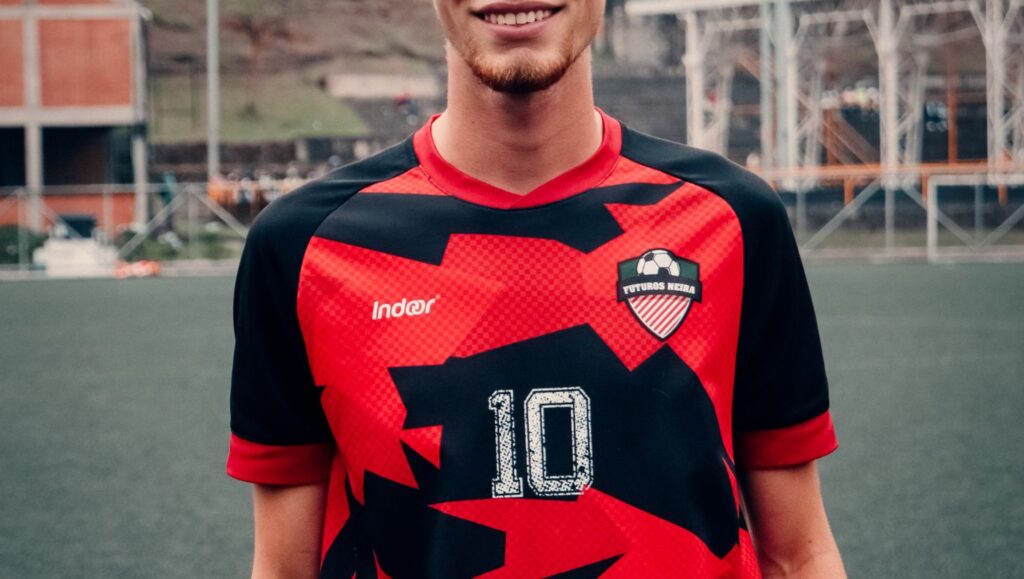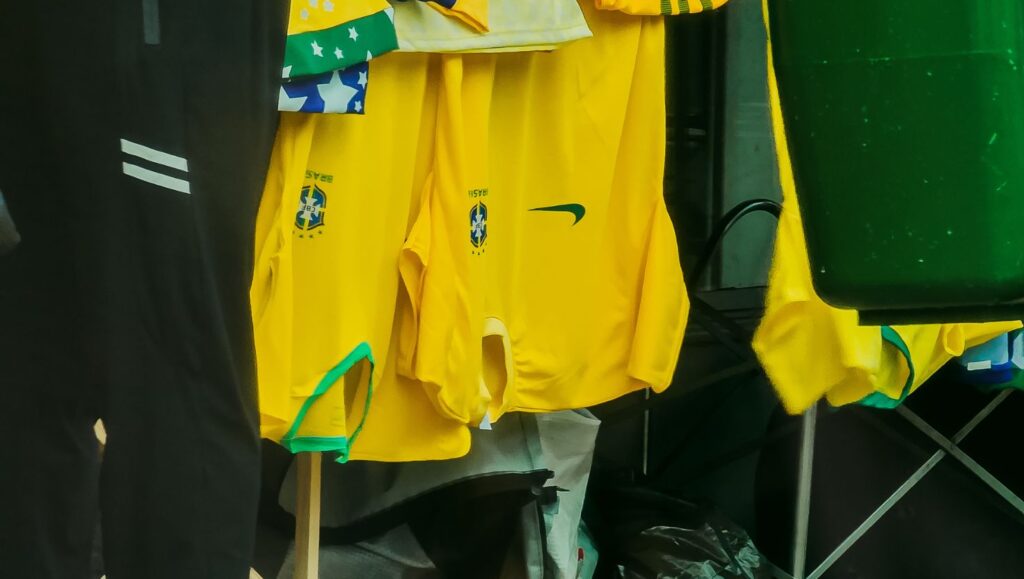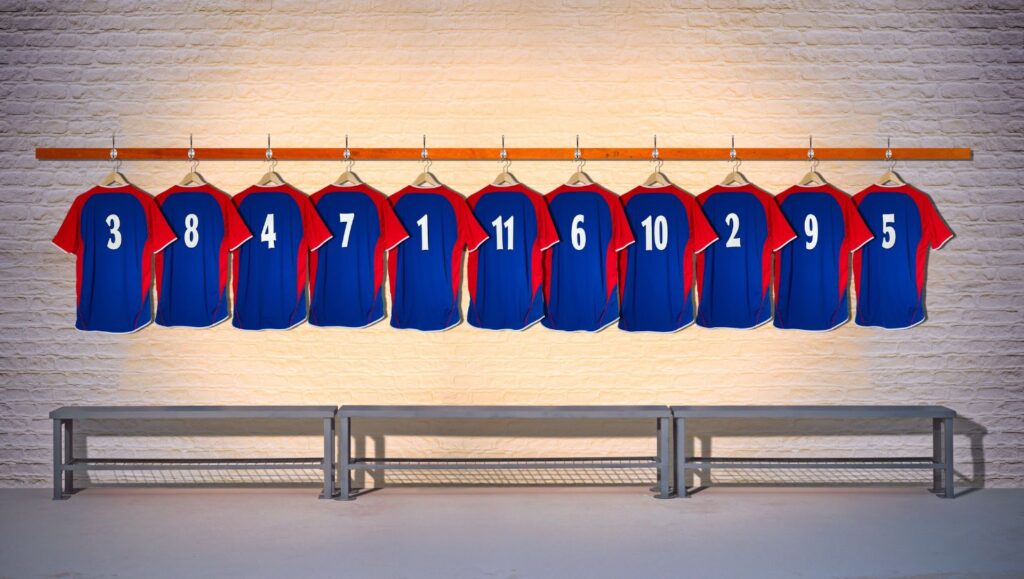The comeback of vintage football shirts is rewriting the story of fandom, fashion, and football history in 2025. Walking into stadiums or bustling local pubs across the world, one can spot the bold colors, iconic crests, and nostalgic designs from previous decades proudly worn by fans. This isn’t just a trend—it’s a cultural movement that ties present-day supporters to football’s deep-rooted heritage. Vintage kits from brands like Adidas, Puma, Nike, Umbro, and Kappa evoke memories of game-changing matches, legendary players, and the sometimes gritty soul of the sport. Their appeal crosses generations and borders, blending sporting passion with street style and sustainable fashion.
What ignited this retro revival? From longing for the artisan designs of yesteryear to embracing jerseys as collectible works of art, fans are reconnecting with football’s past in a way that goes beyond simple nostalgia. These shirts encapsulate stories: be it the gripping drama of the 1999 Manchester United treble, Brazil’s golden 1970 World Cup triumph in their iconic Adidas kit, or the striking Umbro patterns worn during Liverpool’s ’80s glory days. This resurgence has propelled vintage kits from diminishing relics to coveted essentials across the football community, both on and off the pitch.
In a world awash with fast fashion and fleeting digital trends, retro football shirts offer authenticity, unique design, and a palpable link to history. Simultaneously, they unite fans in community, empowering them to celebrate heritage while sporting genuine symbols of their favorite clubs and eras. From collectors hunting rare finds to casual wearers embracing the bold geometric patterns of Lotto or the classic touches of Le Coq Sportif, the vintage football shirt renaissance is as much about passion as style. This movement also intersects with broader cultural currents—including music playlists and stadium atmospheres—creating an immersive fan experience like never before. Explore the layers behind this cultural revival as it stitches football’s past and present into one vibrant tapestry.

Understanding the Appeal of Vintage Football Shirts: From Nostalgia to Iconic Designs
Retro football shirts are the tangible essence of football’s rich tapestry, carrying emotional weight and design cues from eras long past. This section dives deep into what makes these vintage kits irresistible for both hardcore fans and new enthusiasts alike. The resurgence isn’t accidental—it’s fueled by an interplay of nostalgia, love for detailed craftsmanship, and the desire to own a piece of football history.
First off, nostalgia plays an undeniable role. Fans relive legendary matches and personal memories by wearing jerseys reminiscent of those iconic moments. Think about the thrill of Diego Maradona’s “Hand of God” goal or when Ronaldo Nazário blazed the pitch – donning the vintage kits from those eras allows fans to embody those stories. It’s not just clothing; it’s a bridge to past glories and defining emotions in football culture.
Beyond emotional resonance, retro football shirts boast unique styles that often starkly contrast with modern minimalist kits. These vintage pieces are famous for bold colors, intricate patterns, and elaborate details. For instance, the geometric zigzags and contrasting collars made famous by brands like Umbro in the ’90s have an eye-catching appeal even today. Meanwhile, clubs outfitted by brands like Le Coq Sportif or Kappa during the late 20th century often sported designs that combined elegance with originality.
The following list highlights key design features that distinguish retro football shirts:
- Bold color schemes: Vintage jerseys flaunt vibrant palettes that modern designs rarely match.
- Distinctive collars and cuff styles: From large polo collars to button-down necklines.
- Historic badges and sponsor logos: Many feature original crests and nostalgic sponsor motifs, adding authenticity.
- Unique fabric textures: Heavier cotton blends or early synthetics giving tactile appeal different from today’s tech fabrics.
To put this into perspective, here’s a table showcasing some standout classic shirts and their notable design trademarks:
| Club/Country | Era | Brand | Design Features | Iconic Player Associated |
|---|---|---|---|---|
| Brazil | 1970 | Adidas | Yellow base, green collar, minimalist style | Pelé |
| Liverpool | 1984 | Umbro | Red with classic V-neck, vintage badge | Kenny Dalglish |
| France | 1998 | Kappa | Blue base with tricolor collar, sleek but bold | Zinedine Zidane |
| Manchester United | 1999 | Umbro | Red with white trim and iconic sponsor logo | Ryan Giggs |
| AC Milan | 1990s | Le Coq Sportif | Red and black stripes, classic crest | Paolo Maldini |
These pieces are more than just jerseys; they’re wearable artifacts. Their timeless designs resonate even today, influencing current football aesthetics and streetwear culture. The involvement of powerhouse brands like Nike and Reebok, alongside heritage names like Mitre and Lotto, ensures a rich palette of designs reminiscent of football’s golden eras.
The Cultural Meaning and Emotional Connection Behind Retro Football-Shirts
Retro football shirts don’t simply represent old kits; they embody memories, identity, and belonging. Fans wear these jerseys not only for style but as symbols of shared history and passion. Their cultural significance runs deep, tapping into the very soul of what it means to be a supporter.
For many, sporting a vintage shirt is a form of homage. Consider the emotional weight a Liverpool fan feels wearing the 1984 European Cup final jersey—the memory of the home side’s heroic victory is stitched right into the fabric. Similarly, donning Brazil’s legendary World Cup kits invokes a collective pride that transcends generations.
This relationship between fanhood and jerseys is explored widely, highlighting how football culture mixes sports with community rituals and atmospheres. The impact goes beyond what happens on the pitch; it shapes fan experiences, be it in the stadium’s roaring crowds or local hangouts. The detailed examination of the cultural meaning behind football jerseys reveals how deeply these garments influence fan identity.
Key reasons for the cultural and emotional allure include:
- Connection to legendary players: Retro shirts carry the aura of icons like Zidane, Maldini, and Pelé, allowing fans to feel close to heroes who transcend generations.
- Symbol of community and belonging: Wearing classic kits often unites diverse groups around a shared love, fostering fanhood and community spirit.
- Nostalgic rituals: Retro jerseys often bring back memories tied to certain matches, tunes, or stadium atmospheres that are part of the fan experience (locker room music playlists often tie into these eras).
- Historic storytelling: Jerseys are storytellers that mark triumphs or trials, transforming simple fabric into narrative vessels.
By wearing these vintage shirts, fans tap into a much bigger picture—a cultural thread interwoven with passion and history. It’s no surprise that retro kits also make their way into global fashion scenes, worn by celebrities and streetwear aficionados, contributing to the wider cultural resurfacing of football’s identity and attitudes.
Fashion and football have long been intertwined, but the resurgence of retro football shirts has amplified this fusion. From the less obvious inclusion in global streetwear to headline collabs between Nike, Puma, and historic clubs, jerseys have transcended their matchday role and moved firmly into lifestyle territory.
The Rise of Retro Football Shirts in Modern Fashion and Sustainability
The vintage shirt comeback has a strong foothold in 2025’s fashion world, where feedback loops between football culture and streetwear thrive. Retro jerseys are not only admired for their history but also for their sustainability credentials compared to fast-fashion alternatives.
With growing consumer awareness around ethical fashion, many fans prefer the timeless quality and longevity of vintage or replica kits, often manufactured by brands like Hummel, Lotto, and Reebok. These jerseys carry a charm that fast-changing modern designs can’t replicate. They also appeal to those who want to reduce their environmental footprint while staying stylish on and off the pitch.
Here’s why retro football shirts have become sustainability heroes:
- Reduced mass production: Vintage shirts promote reuse and slower consumption cycles instead of constant new releases.
- Durable materials: Older fabrics and reconstruction kits often boast longevity over ultra-light modern synthetics.
- Timeless style: The distinctive look ensures these shirts don’t go out of fashion quickly, avoiding fast-fashion waste.
- Support for ethical brands: Some replicas are produced with eco-friendly processes championed by companies like Adidas and Puma.
The economic and environmental benefits also come with a fashionable bonus—retro football shirts dominate urban fashion scenes. The appeal isn’t just for purist fans but for anyone wanting bold, statement-making apparel. In this sense, the classic jersey bridges sporting heritage and mainstream style, helping fuel its cultural importance.
| Brand | Contribution to Retro Style | Sustainability Initiatives | Notable Vintage Replica |
|---|---|---|---|
| Adidas | Reissued classic kits, Archive collections | Recycled materials, reduced waste campaigns | Brazil 1970 Home Kit |
| Puma | Collaborations with historic clubs, retro streetwear influence | Eco-conscious fabrics, circular economy focus | Italy 1982 Replica |
| Nike | Revived legendary kits, design inspiration from past eras | Sustainable fabric innovations | France 1998 |
| Umbro | Classic designs reinstated, Vintage-inspired collections | Heritage preservation focus | Liverpool 1984 |
| Reebok | Faithful vintage recreations, classic branding | Use of recycled nylons, environmental certifications | England 1990 World Cup |
This blend of ethical considerations and cultural style cements retro football shirts as not just fashion statements but symbols of intelligent consumer culture in 2025. The ability to shop vintage or high-quality replicas enables fans to wear their football allegiance with pride and purpose.
Collecting and Identifying Authentic Retro Football Shirts: Tips for Fans and Enthusiasts
As retro football shirts rise in popularity and market demand, spotting authentic jerseys versus replicas or fakes is crucial for collectors. Whether you’re after an original Lotto Racing kit or a recreated Le Coq Sportif masterpiece, understanding what separates the genuine from the gimmicky is essential.
Collecting vintage football shirts is about history but also about craftsmanship, rarity, and condition. The material, tags, older sponsor logos, and even specific stitching can reveal authenticity. Here are some critical pointers:
- Look for official branding: Genuine shirts bear original manufacturer logos such as Adidas, Nike, or Umbro, often embroidered or heat-pressed with quality finish.
- Tags and certification: Authentic jerseys may feature original tags, year stamps, or certificates proving their provenance.
- Assess fabric and texture: Vintage shirts typically have a heavier or distinct fabric feel compared to many modern kits.
- Check for historical logos: Correct club crests, sponsor marks of that era are a major giveaway.
- Condition Matters: Minor wear adds character, but excessive fading or damage can reduce value.
Investing in classic jerseys is also a long game. Some rare items appreciate dramatically, becoming prized collectibles. Think about shirts worn in memorable matches or significant tournaments—iconic for their stories and scarcity. For example, a 1999 Manchester United treble-winner kit or a Lotto Italy 1982 replica can command significant prices among collectors.
| Shirt Model | Era | Key Authenticity Markers | Estimated Market Value |
|---|---|---|---|
| Manchester United 1999 Treble Shirt (Umbro) | 1999 | Original Umbro logo, vintage tag, correct sponsor logo | £1,500 – £3,000 |
| Brazil 1970 World Cup (Adidas) | 1970 | Classic Adidas badge, yellow cotton fabric | £5,000 – £10,000 |
| Liverpool 1984 European Cup Shirt (Umbro) | 1984 | Original badge, vintage Umbro logo | £1,200 – £2,500 |
| France 1998 World Cup (Kappa) | 1998 | Official Kappa logo, tricolor detailing | £800 – £1,600 |
| Italy 1982 World Cup Replica (Puma) | 1982 | Puma heritage logo, high-quality embroidery | £1,000 – £2,000 |
For those diving into this world, trusted sellers and mystery boxes from outlets like Mystique Jerseys offer an exciting mix of authentic retro and current kits. These options give fans the thrill of the hunt and the joy of discovery all in one purchase.

How Retro Football Shirts Foster Fan Identity and Enhance Matchday Experiences
Retro football shirts don’t just complete an outfit—they deepen the connection between fans and the live experience of football. Sporting these jerseys elevates the electric atmosphere of stadiums and fan zones, linking supporters to their club’s history and, by extension, to each other.
At stadiums, retro jerseys become a visual celebration of tradition. Waves of vintage kits fuel excitement and bring a sense of unity—a collective flashback fused with modern-day rivalry intensity. The nostalgia embodied in these shirts complements the noise, chants, and excitement, amplifying the overall ambience documented in detailed studies about stadium atmospheres and stadium experiences.
Moreover, retro shirts encourage storytelling. Fans wearing an Umbro or Reebok classic strike up conversations with fellow spectators, sharing anecdotes about players, matches, and iconic seasons. It’s this passion and connection that elevate football from a game into a communal event buzzing with emotion.
- Community bonding: Retro shirts create a visual language that connects generations and backgrounds in stands or fan zones.
- Cultural memory: Wearing kits linked to legendary teams or moments aligns fans with club history.
- Fashion flair: These shirts stand out in crowds and at football pubs, merging fandom with lifestyle.
- Motivation and pride: Sporting a vintage shirt on matchday sparks personal and collective pride.
For many, the thrill complements the playlist blasting in locker rooms and fan gatherings, linking sounds to visuals for an immersive football culture celebration. Retro kits are not just apparel; they act as a kind of fanhood currency, opening doors to conversations and community spirit that define the beautiful game’s global passion.
